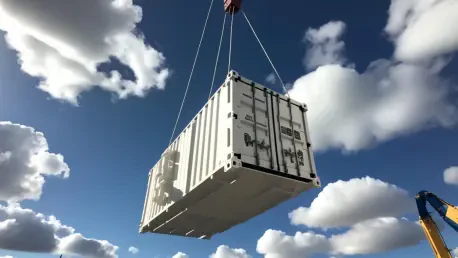In recent years, the U.S. pharmaceutical industry has been navigating the complex landscape of international trade policies and their implications on drug manufacturing and pricing. Central to this discussion are the tariffs proposed by the Trump administration, which have placed a spotlight on the importation of pharmaceuticals into the United States. The potential implementation of these tariffs has introduced uncertainty regarding their impact on both domestic and international drugmakers operating within U.S. borders. This analysis delves into the possible repercussions on drug pricing, research, development, and the broader pharmaceutical manufacturing ecosystem, highlighting how varying degrees of exposure could influence different companies.
Analyzing the Tariff Proposals
Varying Impact Across Companies
The potential imposition of tariffs on pharmaceuticals by the U.S. government has become a focal point of concern for the industry. The idea of introducing tariffs ranging from minor levies to a staggering 200% on imported drugs has sparked considerable debate among stakeholders. The principal concern lies in the differential impacts these tariffs could wield across the industry. Companies equipped with substantial manufacturing operations within the U.S., such as AbbVie, Bristol Myers Squibb, and Eli Lilly, are perceived to be in a more favorable position. Their robust domestic production capacity underpins their resilience against possible tariff repercussions, setting them apart from their counterparts with limited U.S.-based operations.
On the other hand, companies like Novartis and Roche exhibit greater susceptibility to potential tariffs due to their extensive reliance on international supply chains. Concerns about these companies’ exposure have been echoed by industry analysts who underscore the pivotal role of geographic manufacturing diversity. The geographical footprint significantly influences how these entities may handle rising tariffs and the corresponding shifts in market dynamics. Analysts from TD Cowen and Jefferies have provided in-depth assessments, weighing the potential risk factors, including manufacturing locations and ingredient sourcing, in light of the proposed tariffs’ anticipated escalation.
Financial Implications and Pricing Dynamics
The introduction of pharmaceutical tariffs has the potential to reverberate profoundly within the financial frameworks of affected companies. The cascading effects of increased import costs could lead to a substantial impact on free cash flow, compelling businesses to reevaluate pricing strategies and explore avenues to absorb or transfer these costs. Industry insiders surmise that firms may opt to adjust drug prices as a countermeasure to offset tariff-induced expenses. However, navigating such changes remains a challenge due to growing public and political scrutiny of drug pricing practices in the U.S. market.
Another dimension to consider is the broader financial implications tied to research and development investments. While budgetary adjustments are anticipated, experts caution against significant reductions in R&D outlays due to innovation’s intrinsic value in sustaining competitive advantage. The delicate balance between managing financial pressures and retaining innovation capabilities underscores the complexity of strategic decision-making paths pharmaceutical companies are likely to traverse amid tariff uncertainties. The overarching sentiment among industry experts is that companies are seeking inventive solutions to circumvent inevitable challenges without compromising the industry’s long-term growth prospects.
Strategic Responses and Industry Concerns
Supply Chain and Innovation Considerations
The potential ripple effects of tariff impositions extend beyond direct company impacts, leading to significant ramifications across the entire pharmaceutical supply chain. Concerns expressed by business leaders highlight the potential for disruptions stemming from increased costs and logistical hurdles. Supply chains, which are intricately interwoven with international components, may experience heightened complexity and volatility—factors critical to companies’ operational agility. This complexity is particularly pronounced for companies relying heavily on imports, as the implementation of tariffs could compound existing supply chain inefficiencies.
Furthermore, innovation within the pharmaceutical sector, a cornerstone of drug development and therapeutic advances, risks bearing the brunt of these tariff impacts. The uncertainty surrounding the tariffs places a strain on companies’ capacity to allocate resources for innovation and research endeavors. The potential reduction in available capital could affect the pipeline of treatments and medications that feed the market, ultimately impacting patients’ access to cutting-edge therapeutic solutions. Consequently, experts caution against undermining innovation capabilities, emphasizing the pivotal role of sustained R&D funding in supporting the industry’s growth trajectory.
Calls for Exemptions and Strategic Realignments
In response to tariff concerns, some companies have been proactive in voicing the industry’s needs and considerations. Pharmaceutical giants like Roche have appealed for exemptions on specific pharmaceutical and diagnostic products, emphasizing the critical intersection between patient access and innovation continuity. Exemption-seeking efforts reflect the industry’s collective determination to safeguard core business functions and technological advancements in the face of potential market disruptions. These strategic realignments underscore companies’ resilience and adaptability, bolstering their ability to weather policy-driven challenges.
Among the strategic maneuvers being considered are adjustments within companies’ operational frameworks to mitigate tariff impacts effectively. Executives have explored options such as increasing domestic investments, expanding manufacturing footprints, and diversifying supply chains beyond European reliance. Notably, the focus on alternative sourcing and contract manufacturing options in regions like Puerto Rico highlights enterprises’ proactive approaches to enhancing operational flexibility and strategic autonomy. By pursuing inventive solutions to counteract tariff effects, companies strive to maintain optimal service levels while limiting potential repercussions on research progress and innovation.
Broader Industry Impacts
Targeting International Operations
The expansive reach of potential pharmaceutical tariffs prompts an examination of the broader ramifications that extend to international operations. As the U.S. evaluates its trade priorities, one key focal point is the impact of international tax strategies on the pharmaceutical landscape. Companies with significant international footprints, including giants like Amgen and Merck, face heightened scrutiny in this regard. Sites outside the U.S., particularly those in countries offering competitive tax rates, have garnered attention as potential tariff targets, with regions such as Ireland being at the forefront of this analysis.
The intricate interplay between international operations and tariff implications demands a nuanced understanding of companies’ global strategies. Investments in foreign manufacturing sites, driven by tax planning considerations, may now invite additional evaluation to gauge potential exposure to tariffs. Evaluating such factors holistically serves as a foundation for informed decision-making as companies contemplate potential operational realignments. Crafting strategies that optimize manufacturing locations and supply chain configurations will be pivotal to preserving business continuity and realizing long-term profitability. This strategic recalibration assumes central importance amid shifting geopolitical landscapes that influence pharmaceutical industry dynamics.
Navigating Uncertainty
The complex task of accurately assessing potential tariff impacts stems from the intricate and often non-public nature of international pharmaceutical operations. This opacity poses a formidable challenge, compelling companies to navigate uncertainties using innovative tactics. As businesses grapple with these emerging challenges, mapping out various scenarios assists in shaping contingency plans and refining risk mitigation strategies. Effective foresight relies on melding industry insights, regulatory developments, and evolving market trends to predict and preemptively address potential disruptions.
Exploring avenues to alleviate tariff pressures remains paramount. Companies are likely to explore geographic diversification to reduce reliance on specific international markets and embrace a more globally integrated approach. The pursuit of regional manufacturing hubs, in conjunction with alternate sourcing options, reflects the industry’s iterative efforts to optimize supply chain resilience. In essence, these strategic endeavors emphasize adaptability and forward-thinking, ensuring that companies are well-prepared to withstand potential tariff-driven disruptions with minimal repercussions on business operations.
Navigating the Future
In recent years, the U.S. pharmaceutical industry has been grappling with the intricate maze of international trade policies and their effects on drug manufacturing and pricing. A key element in this ongoing debate is the tariffs proposed by the Trump administration, which have heightened focus on the importation of pharmaceuticals into the U.S. These tariffs could introduce significant uncertainty, potentially affecting both domestic and international drug manufacturers that operate within U.S. borders. The repercussions could be extensive, impacting drug pricing, research and development efforts, and the broader pharmaceutical manufacturing environment. As companies vary in their degree of exposure to these tariffs, the consequences could differ widely, influencing competitive dynamics, production strategies, and pricing structures. This scenario underscores the complexity of navigating global trade policies and their potential to reshape the pharmaceutical landscape considerably.









